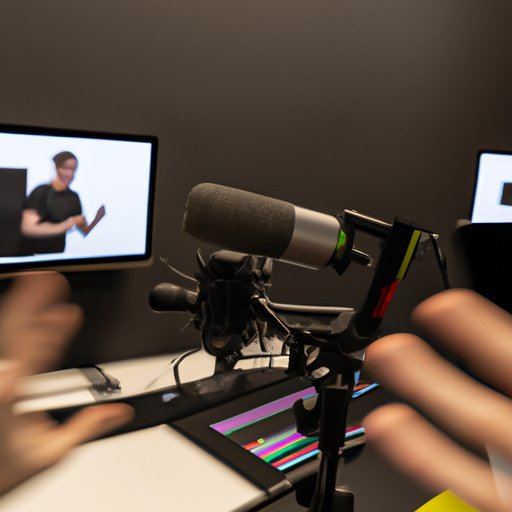
Introduction
Screen recording is the process of capturing your computer screen and turning it into a video. This can be incredibly useful for productivity, problem-solving, and sharing information with others. Whether you’re a teacher looking to create video tutorials, a gamer looking to share your gameplay with the world, or just someone who wants to record a video call, screen recording is an essential tool in your arsenal.
Step-by-Step Guide to Screen Recording
The basic process of screen recording involves selecting the area you want to record, pressing the record button, and then stopping the recording when you’re done. However, there are a few important details to keep in mind when screen recording. Here’s a step-by-step guide:
- Decide what you want to record. Do you want to capture your entire screen, a specific window, or a custom area?
- Select your screen recording software. There are many options available, so choose one that’s right for your needs.
- Adjust your settings. Make sure your audio and video settings are set up correctly.
- Start your recording. Press the record button and begin your screen recording.
- Edit your recording. Trim any unnecessary footage and add effects if desired.
- Export your video. Save your final video in the format of your choice.
It’s important to remember that screen recording can be finicky at times. If you’re experiencing issues, try troubleshooting by resetting your recording software or adjusting your settings.
Best Screen Recording Software
There are many screen recording software options available, each with their own pros and cons. Here are some of the best options:
- Snagit: This software is great for creating instructional and tutorial videos. It also offers a variety of editing tools and effects.
- OBS Studio: A free, open-source software that’s great for gamers and live-streamers. It’s also highly customizable.
- Camtasia: Another great option for instructional videos, Camtasia offers a variety of tools for editing and creating professional-looking videos.
- Screencast-O-Matic: This software is great for beginners, as it’s easy to use and offers plenty of features. It’s also affordable.
Ultimately, the best screen recording software for you will depend on your specific needs and budget.
Improving Productivity with Screen Recording
Screen recording can be a powerful tool for improving productivity. Here are some examples:
- Creating instructional videos for employees or students.
- Emailing a screen recording instead of writing a long email.
- Collaborating with team members remotely by sharing screen recordings.
To maximize the benefits of screen recording, it’s important to practice good habits. Schedule time for screen recording, keep track of your files, and make sure to organize and label your videos in a way that makes sense for you.
Editing Screen Recordings
Once you’ve recorded your screen, you may want to edit the footage to make it more polished. Here are some tips:
- Cut and trim footage. Remove any unnecessary footage to make your video more concise.
- Add effects and transitions. Use effects to enhance your video and add a professional touch.
- Export in the format of your choice. Depending on where you’re sharing your video, you’ll need to export it in a certain format.
It’s also important to make sure your audio quality is top-notch, especially if you’re recording a tutorial or instructional video.
Tips and Tricks for Screen Recording
To get the most out of screen recording, it’s important to optimize your settings and experiment with different techniques. Here are some tips:
- Reduce file size. Use compression tools to reduce the size of your videos.
- Optimize your settings. Adjust your recording settings to achieve the best possible quality.
- Use a good microphone. Invest in a good quality microphone to achieve clear audio.
Real-Life Applications of Screen Recording
Screen recording is used in countless different scenarios, from creating instructional videos to sharing gameplay with friends. Here are some real-life examples:
- Creating instructional videos for students or employees.
- Recording a video call to reference later.
- Sharing gameplay footage with friends or online.
- Creating webinars or online courses.
The possibilities are endless when it comes to screen recording, so don’t be afraid to get creative!
Conclusion
Screen recording is a powerful tool for boosting productivity and problem-solving. By following a few simple steps and using the right software, you can capture your computer screen and turn it into a professional-looking video. Whether you’re a teacher, gamer, or just someone who wants to share information with others, screen recording is an invaluable tool in your arsenal.
So why not give it a try? You might be surprised at just how much easier it makes your life. And if you run into any issues, don’t hesitate to troubleshoot or seek out additional resources.




